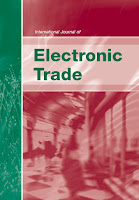Transport is at a crossroads as we move away from filling our tanks with liquid fossil fuels and powering them up from battery charging points. However, the lithium-ion batteries that displaced those tanks have a finite lifespan and must be replaced when their recharge capacity falls below a usable level. With millions of electric vehicles set to be driving our roads in the coming decades, the shift to a promised greener, cleaner future for transport is well underway…but only if we can manage the battery waste and ensure that their batteries don’t end up in a pile-up of electrical waste.
Writing in the International Journal of Environment and Waste Management, a team from India has carried out a critical review of where we stand in terms of transport and the future problem of battery waste and lost resources. Preeti Mishra and Sayali Apte of the Department of Civil Engineering at Symbiosis International (Deemed University) in Pune, Maharashtra, have examined key elements of the growing electric vehicle market. They have looked at the impact on the environment and the crucial role of recycling in making the industry sustainable. The team underscores the need for sustainable solutions from both the environmental and the human health perspective.
The so-called EV30@30 scenario suggests that we will be driving well over 43 million electric vehicles by 2030. Research into the long-term impact suggests that this transition will reduce pollution and our dependency on fossil fuels, provided power generation for those vehicles is sustainable, but there will also be an increase in electrical waste generation as the years roll by.
Recycling might reduce some of the waste and allow re-use of precious resources, but there will still be a lot of heavy metal waste that will end up in landfills the world over. Much of the research into this issue has been done in China and the USA modelling how the waste might be managed, but there is a dearth of research in developing countries, the team writes. Of course, in places where this is less research being undertaken, the problem of electrical and electronic waste ending up in landfill will inevitably be greatest, the review suggests.
Electric vehicles will hopefully motor us towards greener, cleaner transport, but there is always a compromise in the form of the waste management challenges they present, which are very different from those we have had to cope with in the era of the internal combustion engine. The issues cannot be off-roaded, they require immediate attention to allow us to develop sustainable battery chemistry, waste management techniques, and recycling practices.
Mishra, P. and Apte, S. (2023) ‘Geo-environmental and human health impacts of spent lithium-ion battery waste and its recycling: a critical review’, Int. J. Environment and Waste Management, Vol. 32, No. 3, pp.286–300.


